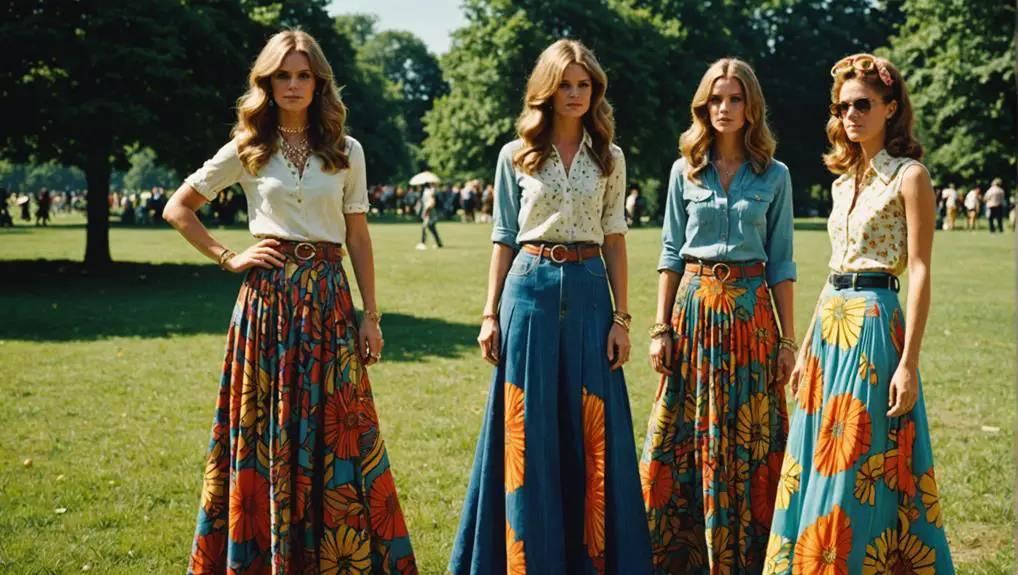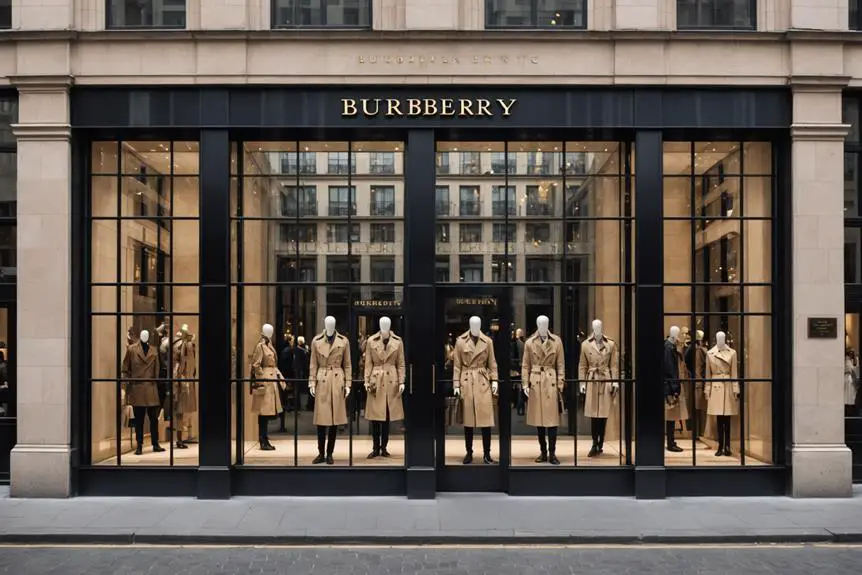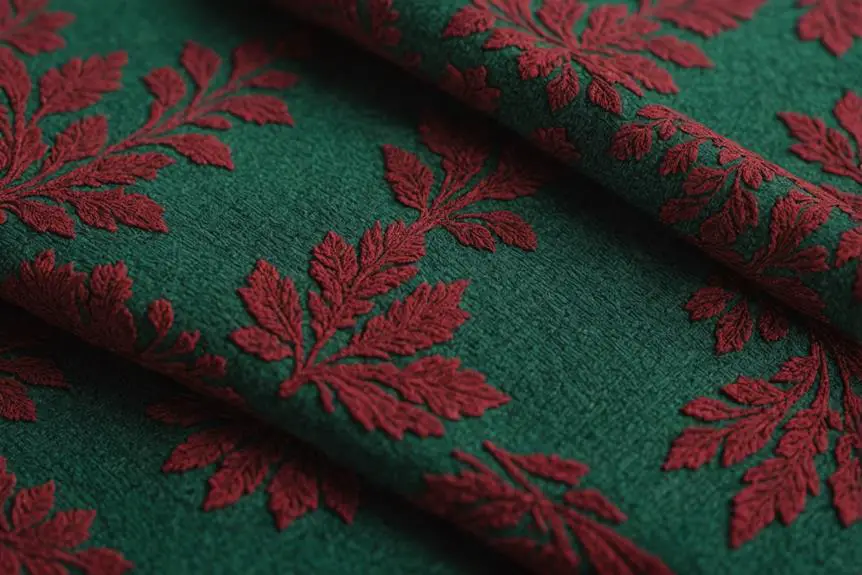Women's skirts in the 1970s reflected a unique blend of comfort and individuality. You'd find a range of styles, from playful mini skirts to elegant maxi lengths, each expressing personal flair. The hippy movement influenced flowing fabrics, while the rise of women's rights encouraged bolder designs and vibrant patterns. Materials like cotton and polyester guaranteed both comfort and creativity, allowing skirts to become canvases for self-expression. Popular cuts, like A-line and empire waistlines, suited various body types. Each choice showcased a rejection of strict norms, revealing a broader cultural significance. Explore more to uncover the era's full fashion impact.
Overview of 1970s Skirt Trends
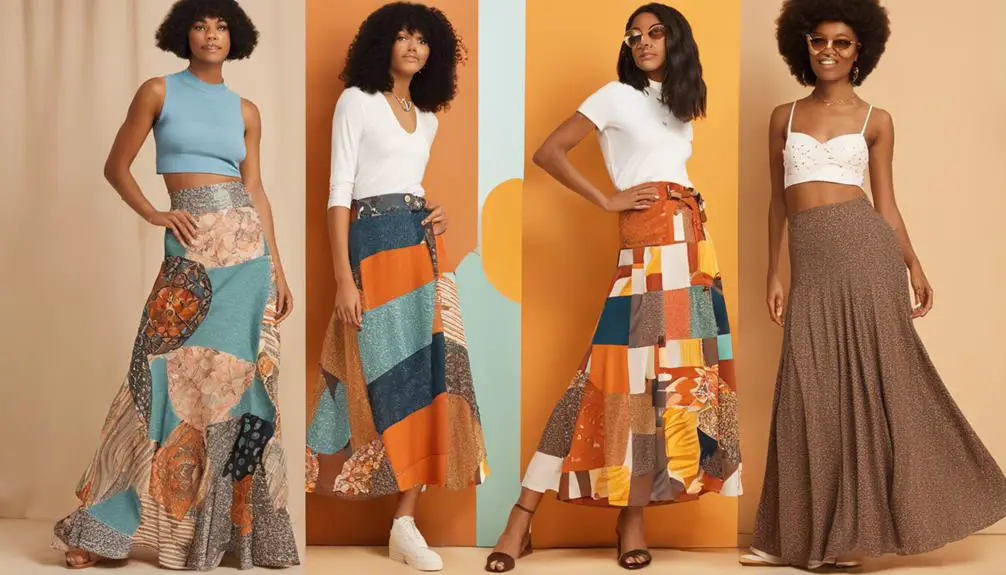
The 1970s skirts were a vibrant canvas reflecting the decade's shifting cultural landscape and personal expression. This era embraced a rich diversity in skirt lengths, showcasing the enduring popularity of the mini dress, the emerging midi skirts, and the widespread adoption of maxi skirts. Each style served as a statement, allowing you to articulate your individuality.
Maxi skirts, often inspired by the hippy movement, offered a loose-fitting design that emphasized comfort. When paired with flowing tops, these skirts created a relaxed silhouette, embodying the era's ethos of freedom and casual elegance. In contrast, midi skirts introduced a more structured approach, typically falling just below the knee. They often featured wrap-around or shirt waist designs, providing versatility that appealed to many fashion-forward women.
The vibrant aesthetic of the 1970s was further enhanced by floral prints, patchwork designs, and textured fabrics. Innovations in materials, like jersey knits and polyester blends, made these bold styles more accessible. As you explored these trends, you could easily find a skirt that resonated with your personal style, celebrating the spirit of the decade.
Popular Skirt Lengths
Fashion choices in the 1970s embraced a remarkable variety of skirt lengths, each offering its own unique flair and appeal. You'll find that the decade showcased three primary styles: mini, midi, and long maxi. Each length catered to different preferences and occasions, allowing you to express your individuality.
| Skirt Length | Description |
|---|---|
| Mini Skirt | Typically above the knee, often A-line or flared, perfect for a youthful and playful look. |
| Midi Skirt | Hitting just below the knee, blending fitted styles with traditional loose cuts, ideal for versatile occasions. |
| Long Maxi | Floor-length designs influenced by the hippy movement, made from flowing fabrics for comfort and a bohemian vibe. |
The mini skirt remained a staple throughout the decade, while the midi skirt gained traction in the mid-to-late 1970s. Maxi skirts emerged as a fashionable choice, emphasizing comfort and a free-spirited style. This diversity in skirt lengths not only highlighted personal style but also challenged the rigid fashion norms of previous decades, inviting you to embrace comfort alongside trendiness.
Key Design Features
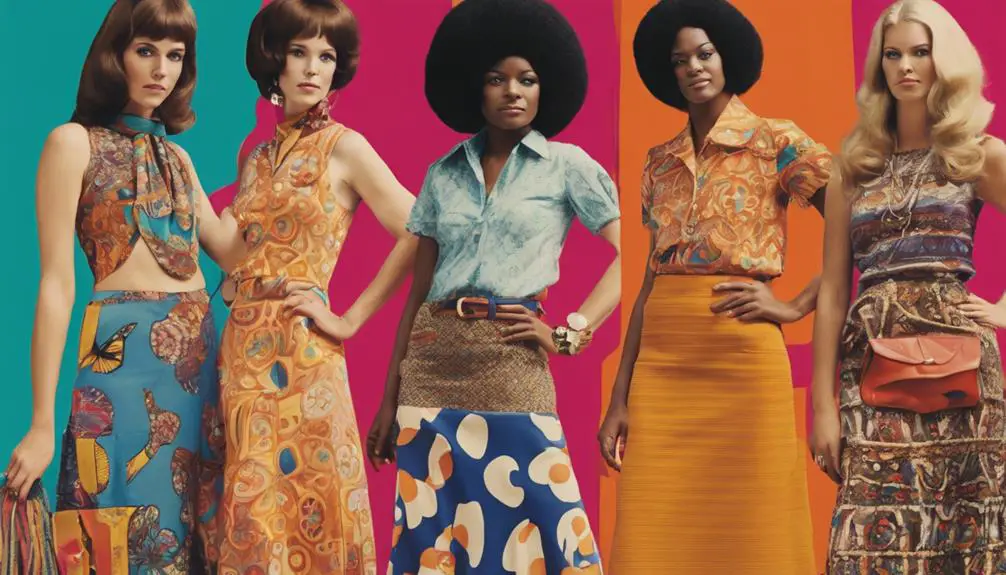
During the 1970s, key design features of skirts reflected a shift towards comfort and individuality. You'd notice a wide variety of lengths—mini, midi, and maxi styles—inviting you to express your unique fashion sense. This era also saw the rise of vintage brands known for their distinct tailoring and quality fabrics, enhancing the overall aesthetic of women's fashion, as seen in vintage clothing characteristics. A-line and flared designs dominated the decade, focusing on comfort and freedom of movement, steering away from restrictive silhouettes that characterized earlier styles.
Empire waistlines positioned just below the bust became a hallmark feature, enhancing the feminine silhouette while allowing ease of wear. Fabrics like cotton, polyester, and velvet emerged, often adorned with vibrant prints and patterns that captured the eclectic spirit of the era. These materials not only provided comfort but also showcased bold creativity, making each skirt a canvas of self-expression.
Influences on Fashion Choices
Influences on fashion choices in the 1970s were deeply intertwined with the cultural and social movements of the time. The women's rights movement played an essential role, promoting greater freedom and expression in personal style. You might've noticed how this shift encouraged women to embrace individuality, prioritizing personal preferences over conformity to traditional norms.
The hippy movement, particularly in California, popularized the maxi-dress, symbolizing a move towards relaxed and comfortable clothing. As you observed skirts evolve, the decade brought increased accessibility to various lengths, allowing women to represent their body types more authentically. This variety empowered you to choose styles that resonated with your unique identity.
The fashion landscape of the 1970s reflected broader social changes, where clothing became a form of self-expression. You could see this rejection of strict societal norms regarding femininity in how skirts were styled and worn. Instead of adhering to rigid expectations, women explored bolder patterns, fabrics, and cuts that mirrored their desire for freedom. Overall, the decade marked a significant cultural shift, with fashion serving as a fundamental indicator of shifting attitudes toward gender and self-identity.
Impact of Cultural Movements
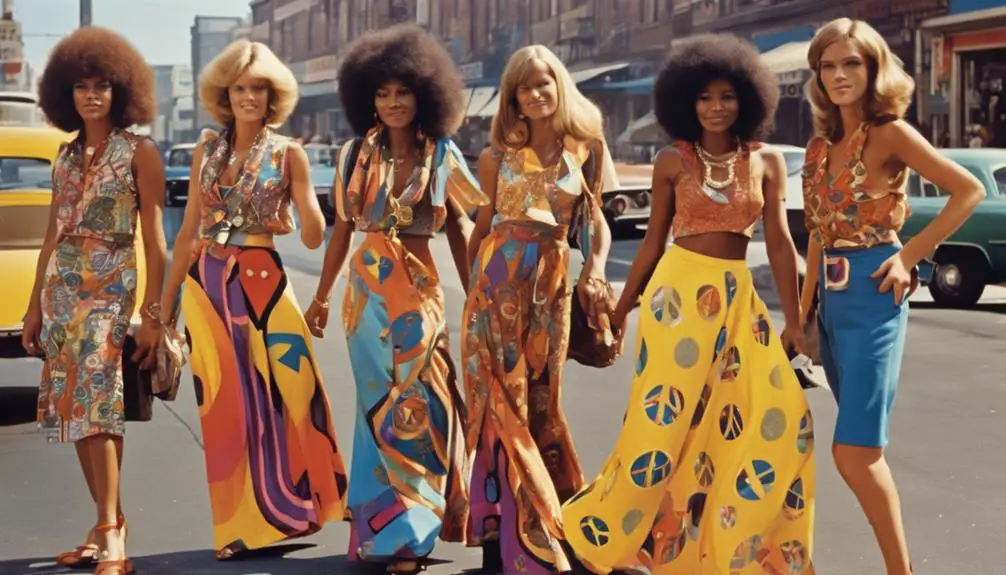
The cultural movements of the 1970s had a profound impact on women's skirt styles, reflecting a time when self-expression took center stage. The hippy movement popularized maxi dresses, symbolizing a longing for freedom and an embrace of bohemian ideals. As you explored your wardrobe, the emphasis shifted toward comfort and personal style, spurred by the women's rights movements that encouraged you to reject traditional gender norms.
Punk fashion emerged as a bold counterculture, challenging mainstream fashion with edgy designs. You might've noticed the incorporation of leather and striking patterns into skirts, marking a clear departure from the past. The decade also embraced casual, accessible fashion, mirroring broader social changes and the desire for individuality.
These cultural shifts, rooted in the experimental spirit of the 1960s, paved the way for a diverse array of skirt styles and lengths. As you navigated the fashion landscape, you found yourself part of a revolution that celebrated uniqueness and personal expression. Wearing a skirt became more than just a choice; it became a statement about who you were and the values you embraced during this transformative era.
Fabrics and Materials Used
As you sift through the fashion of the 1970s, you'll notice a fascinating variety of fabrics and materials that defined women's skirts. Cotton and polyester emerged as staples, offering comfort and versatility for everyday wear. The flowing maxi skirts, a symbol of the era, often featured lightweight cotton gauze and polyester blends, promoting ease of movement and a relaxed vibe.
For those cooler months, vintage wool blends provided warmth and structure, particularly in midi skirts, marrying practicality with style. The bold and vibrant patterns that characterized this decade were often crafted from these fabrics, showcasing floral prints, psychedelic designs, and innovative patchwork techniques that captivated the eye and reflected the spirit of the time.
Jersey knit fabrics also gained traction, allowing for form-fitting skirts that hugged the body while maintaining a sense of comfort. This material emphasized the relaxed silhouettes that became synonymous with the decade. Ultimately, the diverse fabrics and materials not only defined women's skirts in the 1970s but also served as a canvas for self-expression, embodying the cultural shifts and creative energies of the time.
Evolution of Evening Wear
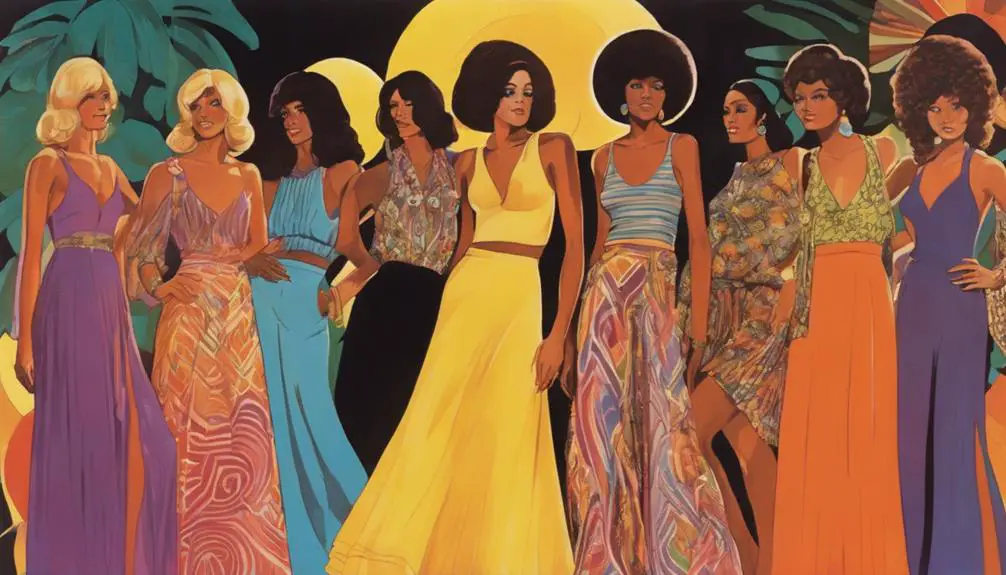
While exploring the evolution of evening wear in the 1970s, you'll find a dynamic shift in styles that prioritized both elegance and comfort. Long maxi dresses became a staple, often featuring empire-line cuts that enhanced their flowing silhouette, making them perfect for formal occasions. These dresses, especially in bold colors like cerise, exemplified the era's vibrant aesthetic and luxurious fabrics, showcasing a confident and expressive femininity.
Conversely, mini dresses emerged as a popular option for casual evening events, typically designed in A-line or flared styles that promoted comfort and freedom of movement. This versatility allowed women to choose between formal elegance and relaxed chic, reflecting their personal style.
High necklines gained favor during this decade, adding sophistication to women's evening attire. This trend signified a blend of traditional elegance with contemporary flair, allowing for a seamless shift from day to night. The 1970s marked a significant evolution in evening wear, as designers embraced comfort without sacrificing formality. This change not only changed how women dressed for evenings out but also empowered them to express their individuality, setting the stage for future fashion trends.
Accessibility in Women's Fashion
In the 1970s, women experienced a revolution in fashion that emphasized accessibility and individuality, reshaping how they approached their wardrobes. You saw a vibrant variety in skirt lengths—mini, midi, and maxi styles—catering to diverse preferences and body types. This shift allowed you to choose pieces that resonated with your personal style rather than conforming to rigid trends.
As fashion autonomy expanded, you witnessed the emergence of accessible styles that suited various body shapes and sizes. Brands began to recognize the importance of inclusivity by offering plus-size options alongside standard sizes, making it easier for you and many others to find flattering garments. This democratization of style not only enhanced your shopping experience but also encouraged you to embrace comfort and self-expression.
The evolving landscape of the 1970s fostered a culture where individuality was celebrated, influencing future generations to prioritize personal flair over societal norms. You became part of a movement that valued diversity in fashion, allowing your wardrobe to reflect your unique identity. This era didn't just change what you wore; it transformed how you viewed fashion itself, paving the way for more inclusive practices in the years to come.
Historical Context of Styles
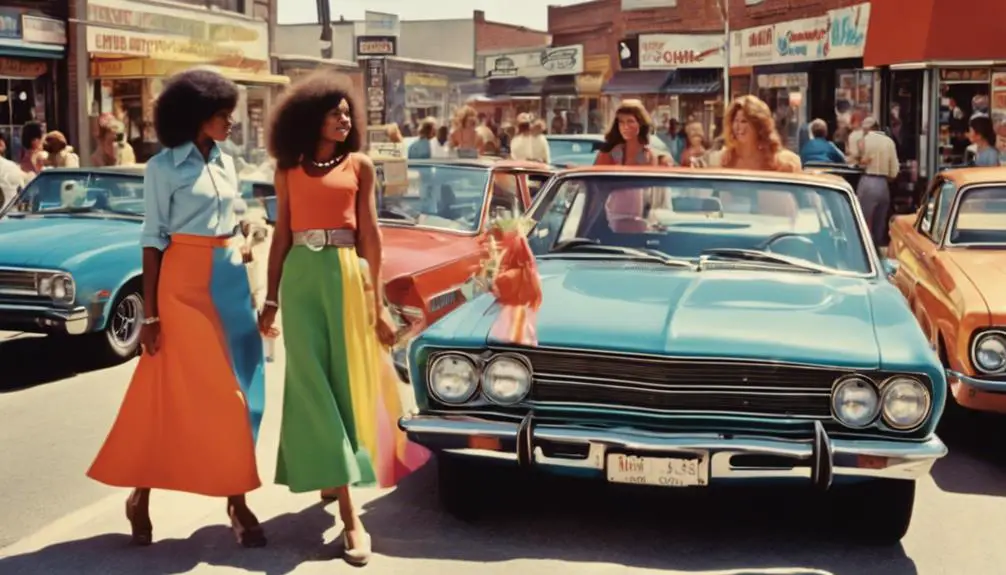
The 1970s marked a pivotal moment in women's fashion, driven by cultural shifts from the previous decade that emphasized freedom and self-expression. You can see this evolution as a reaction against the rigid, structured silhouettes that dominated the 1960s. The women's rights movement and the hippy movement laid a robust foundation for the emergence of relaxed and diverse styles, allowing you to prioritize comfort and individuality in your wardrobe choices.
Popular styles like maxi skirts and dresses emerged as embodiments of the hippy culture, celebrating freedom and natural aesthetics with colorful prints and flowing fabrics. These garments became symbols of a lifestyle that embraced both relaxation and artistic expression. As the decade progressed, the introduction of midi skirts, which fell just below the knee, showcased a shift toward more fitted styles, reflecting a balance between comfort and sophistication.
Ultimately, the fashion choices of the 1970s represented a significant departure from earlier norms. You could now choose not just what to wear, but how to express your identity through your clothing, marking a true revolution in women's fashion history.
Frequently Asked Questions
What Was Popular Women's Clothing in the 70's?
In the 70s, you'd find vibrant patterns and flowy fabrics dominating women's clothing. Maxi dresses, A-line skirts, and comfy jersey knits defined the era, reflecting a blend of freedom, individuality, and the evolving fashion landscape.
What Was the Dress Code in the 1970s?
In the 1970s, you'd notice a laid-back dress code prioritizing personal style and comfort. Influenced by cultural shifts, you'd find diverse clothing choices that encouraged self-expression, blending vibrant patterns with relaxed silhouettes for everyday wear.
How Did People Dress in the 70S Girls?
In the 70s, you dressed vibrantly, embracing bold patterns and relaxed fits. Mini, midi, and maxi options filled your wardrobe, often paired with platform shoes and chunky jewelry, reflecting a spirited, expressive fashion sense.
What Kind of Skirts Did They Wear in the 60s?
In the 60s, you'd see a variety of skirts, from daring mini skirts showcasing bold patterns to A-line designs offering comfort. Midi skirts emerged too, blending sophistication with the playful spirit of the decade.
